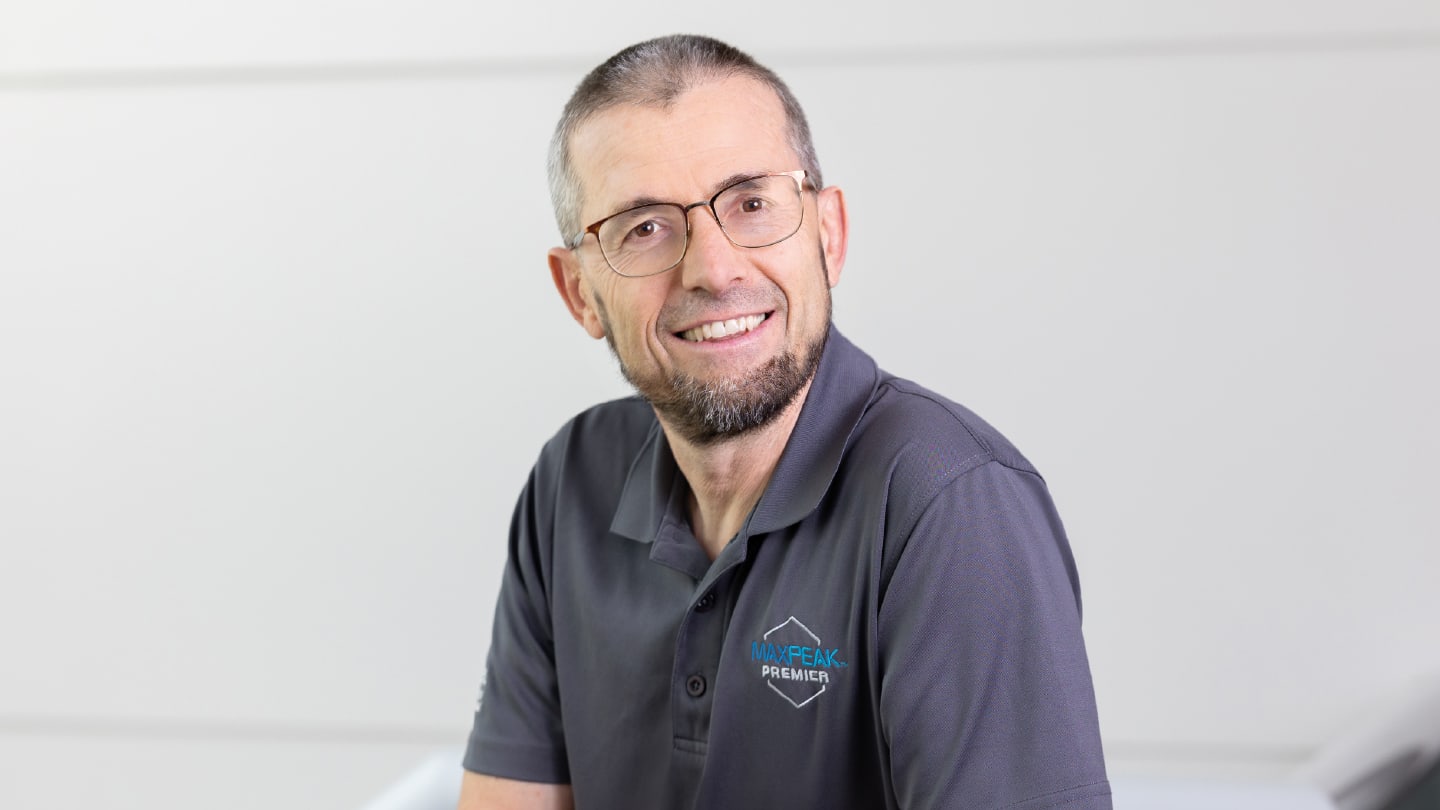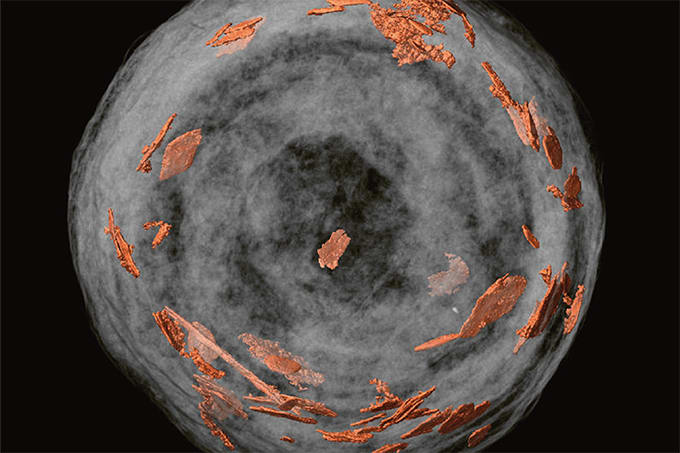
You never know when a dead end might open up
A central challenge when separating DNA and RNA macromolecules – essential during cell and gene therapy development – is the pore sizes of the particles used in modern chromatography columns. Often, they simply aren’t large enough. As a result, developers face a choice between poor selectivity or having to adopt slower and more complicated techniques.
More than a decade ago, my late colleague Edward Bouvier foresaw these challenges posed by the increasing size of biomolecules in cell and gene therapies. He argued that it was time to consider a fundamentally different separation mode.
He recalled that two independent research groups in the late 1980s (one in the US(1) and one in Japan (2)) had successfully separated large plasmid digest fragments exceeding 1 MDa in mass. They coined the term “slalom chromatography” (SC) to describe the phenomenon, likening the movement of DNA molecules through packed particles to a skier weaving through slalom gates (the fixed packed particles). While the concept was visually compelling, the underlying separation mechanism remained poorly understood, and SC was eventually abandoned because of limitations in particle purity, market demand, and mechanistic clarity.
Fast forward to 2022 and the problems Ed foresaw had not gone away. Myself and colleagues at Waters – Matthew Lauber and Kevin Wyndham – began thinking: could we bring slalom chromatography back from the dead?
Step outside your comfort zone to seek fundamental understanding
If we were serious about developing and commercializing the first SC column in the history of chromatographic separation science (and hopefully in 2 to 3 years), we first needed to understand the mechanistic foundations – something that remained elusive as of 2023. I was given full freedom to pursue both theoretical and experimental investigations. I began by trying to understand the fundamentals, which meant stepping outside of my comfort zone as a physical chemist specializing in chromatographic science and delving into the unfamiliar territory of physics literature.
My goal was to understand what happens to DNA biopolymers as they migrate and are subjected to shear forces within liquid chromatography (LC) columns. This exploration took me back to the era of the Human Genome Project in the 1990s, when physicists were investigating the relationship between the elongation of a single DNA polymer chain and the mechanical force applied to one of its ends. From there, I had to understand the magnitude of forces required to stretch, overstretch, and even break a double-stranded (ds) DNA chain.
The next step was to build a conceptual bridge between the world of DNA quantum physics and our own classical world of shear rate in chromatographic separation science. This effort laid the foundation for the first publication we produced on the fundamentals of SC (3). Altogether, it took me nearly a full year of intensive searching and reading to gather the most relevant physics literature related to the core principles of SC.
We discovered that within our LC column, entropic elastic stretching, the process of uncoiling the random DNA coil without enthalpically stretching or breaking chemical bonds, was occurring for double-stranded (ds) DNA, but not for single-stranded (ss) DNA polymers. This insight revealed a significant opportunity in the field of cell and gene therapy: the potential to separate and purify single-stranded RNA (such as mRNA vaccine products) from their double-stranded RNA impurities.
But the real magic happens when theory meets experiment
However, many practical questions remained unanswered: What mobile phase composition should be used? What organic content, salt concentration, or pH? What particle size, temperature, flow rate, or static pressure would be optimal? None of these questions could be resolved through existing literature or by relying on user intuition alone.
I then had to return to the lab and systematically investigate, through experimentation, the intrinsic role of various chromatographic parameters on the retention and efficiency of an SC column. This was not a trial-and-error approach, but rather a quality-by-design methodology, where only one parameter is varied at a time to assess its specific impact on DNA separation. The empirical insights gained from this process led to our second and third practical publications on SC, focused on method development and performance optimization (4,5).
As a result of our initial research efforts, two years later – now in 2025 – we have developed a solid understanding of the separation mechanisms governing DNA and RNA biopolymers as they migrate through chromatographic columns packed with spherical particles. This knowledge has enabled us to streamline the development of an efficient, selective, and robust SC column for separating large DNA/RNA biopolymers. Ultimately, Waters became the first company to commercialize an SC column, marking a significant milestone.
We see this as just the beginning. As customers begin to share feedback, highlight current limitations and suggest new applications, we anticipate further advancements. Our hope is that this technology will contribute meaningfully to the development and delivery of next-generation biopharmaceuticals in cell and gene therapies.
Embrace childlike curiosity – undergirded by a broad scientific education
Having embarked on this exercise of stepping outside my own core area of expertise, I’d like to reflect on what it required from a mindset perspective, and offer some advice for others who might like to try something similar.
The main challenge we faced, as is often the case in interdisciplinary research, lay in adapting to different scientific terminologies and ways of thinking. Physicists don’t think like analytical chemists, and the same holds true for physical chemists and chemical engineers. Yet, breaking down the barriers between these disciplines is incredibly rewarding – provided we’re not discouraged by unfamiliar concepts and are willing to navigate confidently across these scientific domains.
Overall though, I have to say that I had a great time getting to grips with the fundamentals. It didn’t require materials, chemicals, or lab time, only mental engagement through thought experiments. For instance: What happens when DNA chains are exposed to shear forces? Can they remain extended within LC columns? What if we change the flow rate or temperature? What if the particles are negatively charged? What if the ionic strength is altered? We sought answers by exploring relevant physics literature and then transposing those insights into our LC column systems.
My mindset here was reminiscent of a child constantly asking teachers and parents why things happen or how they work – to the point of getting on their nerves! But, like children, researchers exploring new terrain need support. I’m fortunate to work with top-level managers who understand what scientists need to make meaningful progress and deliver impactful results for our customers.
However, for many researchers in industry, it can be difficult to make translational or cross-disciplinary jumps. Professionals are typically assigned to specific technical tasks aligned with the domain for which they were hired. Also, the pressure to deliver results quickly, often “yesterday,” combined with internal review systems tied to career advancement, can discourage scientists – especially those early in their career – from venturing into unfamiliar fields or spreading themselves inefficiently. It’s also difficult because such exploration often demands significant investment in education and scientific development. Not all companies have the resources or flexibility to train their scientists and engineers across multiple disciplines – despite the fact that fostering this kind of intellectual agility can be incredibly valuable for innovation and long-term impact.
My advice, especially for those early in their career, would be to gain a broad scientific education, one that encompasses the core principles of chemistry, physics, analytical chemistry, and physical chemistry, and, most importantly, fosters an understanding of how these disciplines interconnect. This integrative approach is often lacking in the US, where students tend to specialize immediately while completing their master’s degrees. Education delivered as a series of disconnected and independent “islands of knowledge” can significantly hinder the ability of early-career researchers to think holistically and make cross-disciplinary connections.
Analytical science will increasingly require ideas from across disciplinary boundaries and from unexpected angles
My view is that, given the complexity of the new biomodalities designed in the pharmaceutical world and the deep level of characterization required, we will need researchers capable of exploring different disciplines. An expert in liquid chromatography cannot survive alone without complementary expertise in novel detection techniques (light scattering, mass photometry, electrochemistry, some spectroscopy, flow cytometry, etc..) besides classical optical and mass spectrometry. This should naturally be encouraged.
But that isn’t to say that all scientists should attempt to become experts across many different disciplines. Instead, we need researchers capable of interfacing efficiently between all these different disciplines to collaborate with other relevant experts. And some scientists may be more inclined to interdisciplinary working than others. For me, I just enjoy being slightly less ignorant. Learning new concepts in physics and biology, especially when this knowledge is directly applicable to my own work, brings great satisfaction – especially when I get the opportunity to share this new knowledge within our specialized field of separation science, whether through publications or oral presentations at international meetings.
Ultimately, stepping outside my comfort zone in liquid chromatography to better understand slalom chromatography has reinforced my conviction that novel and impactful ideas often originate when someone thinks differently, outside the box, and views things from a completely unexpected new angle. This is possible when a person can comfortably navigate across different scientific disciplines. So, if we want to avoid stagnation, we need cross-disciplinary thinking; and my message to any research manager is: ensure that most of your scientists are multidisciplinary.
References
- J Hirabayashi, KI Kasai, “Slalom Chromatography: A New Size-Dependent Separation Method for DNA,” Nucleic Acid Res. Symp. Ser., 20, 67–68 (1988).
- BE Boyes, DG Walker, and PL McGeer, “Separation of Large DNA Restriction Fragments on a Size-Exclusion Column by a Nonideal Mechanism,” Anal Biochem, 170 (1), 127–134 (1988). DOI: 10.1016/0003-2697(88)90099-1.
- F Gritti and K Wyndham, “Retention Mechanism in Combined Hydrodynamic and Slalom Chromatography for Analyzing Large Nucleic Acid Biopolymers Relevant to Cell and Gene Therapies,” J. Chromatogr. A, 1730, 465075 (2024). DOI: 10.1016/j.chroma.2024.465075.
- F Gritti, “Theoretical Predictions to Facilitate the Method Development in Slalom Chromatography for the Separation of Large DNA Molecules, J. Chromatogr. A, 1736, 465379 (2024). DOI: 10.1016/j.chroma.2024.465379.
- F Gritti “Ultra-High Pressure Slalom Chromatography: Application to the Characterization of Large DNA and RNA Samples Relevant in Cell and Gene Therapy,” J. Chromatogr. A, 1738, 465487 (2024). DOI: 10.1016/j.chroma.2024.465487.




